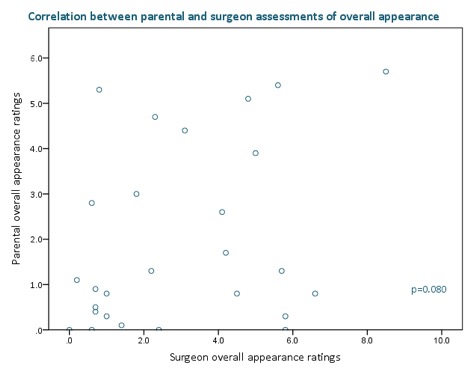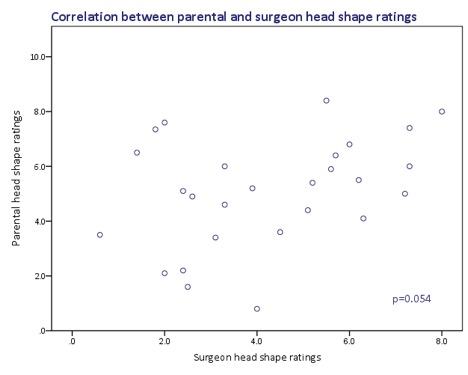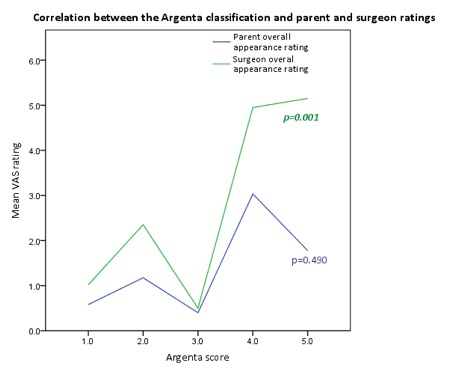Towards the inclusion of parent-reported outcomes in nonsynostotic plagiocephaly research
Elizabeth H. Weissler, BA, Peter J. Taub, MD.
Icahn School of Medicine at Mount Sinai, New York, NY, USA.
Introduction: Recently, controversy has intensified about the efficacy and indications for helmet therapy in nonsynostotic plagiocephaly (NSP). NSP is treated primarily for cosmetic reasons but outcomes research relies entirely on objective measurements. Subjective assessment of appearance is rarely included as an outcome metric. No NSP objective measurement system has been shown to correlate with primary stakeholder (parental) assessments. In order to address the ongoing controversy about optimal NSP treatment, research must incorporate subjective feedback from parents. The authors hypothesized that the Argenta scale would correlate with parental assessments of severity as it is based off observable, rather than measured, differences.
Methods: Parents of NSP patients rated their child's head shape and overall appearance on VAS scales (with one equal to "completely normal" and ten "completely abnormal") at their initial consultation with the senior author. The senior author filled out identical evaluations as well as completing the Argenta scale.
Results: Twenty-seven parents of NSP patients were included. Their children's average age was 5.6±2.2 months. Fourteen families were Caucasian (51.9%), five were Hispanic (18.5%), and three were Asian (11.1%). Twenty-one parents reported hearing comments about their child's head shape from friends or family; the majority of these comments made parents feel worse about their child's head shape (N=14, 66.7%). Parents rated their child's head shape 5.10±1.99 and overall appearance 1.97±1.99. The surgeon rated these parameters 4.27±2.09 and 2.97±2.39, respectively. Caregiver and surgeon ratings of head shape and overall appearance were not significantly correlated (head shape p=0.054; overall appearance p=0.080). Surgeon rating of head shape abnormality and overall abnormality of appearance correlated with Argenta classification (head shape correlation coefficient=0.590 and p=0.003; overall appearance correlation coefficient=0.642 and p=0.001). However, neither parental ratings of head shape nor overall appearance correlated with Argenta classification (head shape p=0.101; overall appearance p=0.490).
Conclusions: Research about treatment of NSP often relies on objective measurements of millimeter differences that may be statistically significant yet of questionable clinical importance. Caregiver ratings of infant head shape and appearance are rarely, if ever, collected. The authors hypothesized that the Argenta classification might correlate with parental assessments, in which case it could be used as a proxy for parent-reported outcomes. However, this was not the case. Researchers must be rigorous about collecting parent-reported outcomes in future studies about the efficacy of NSP treatments. 


Back to 2017 Program




